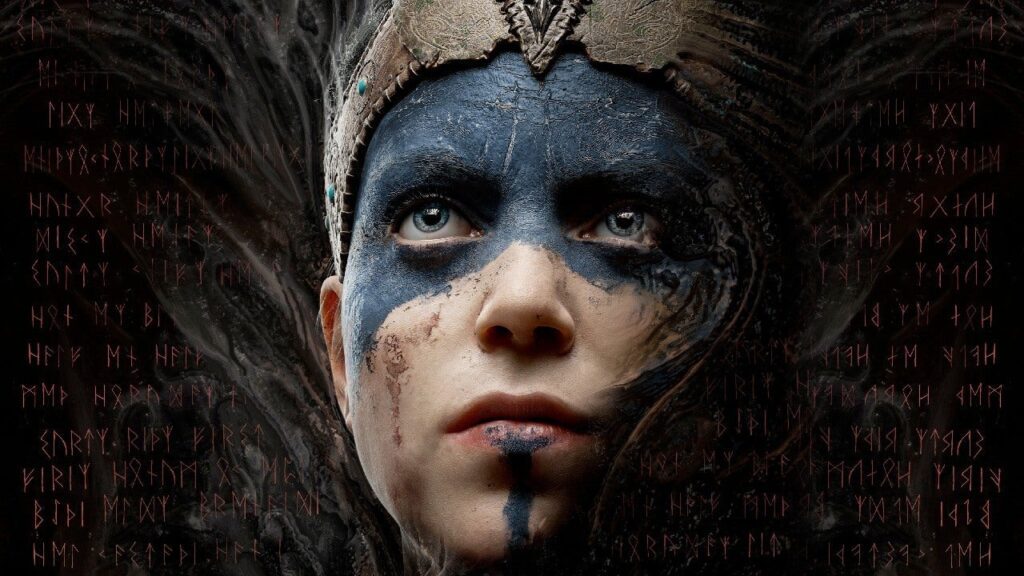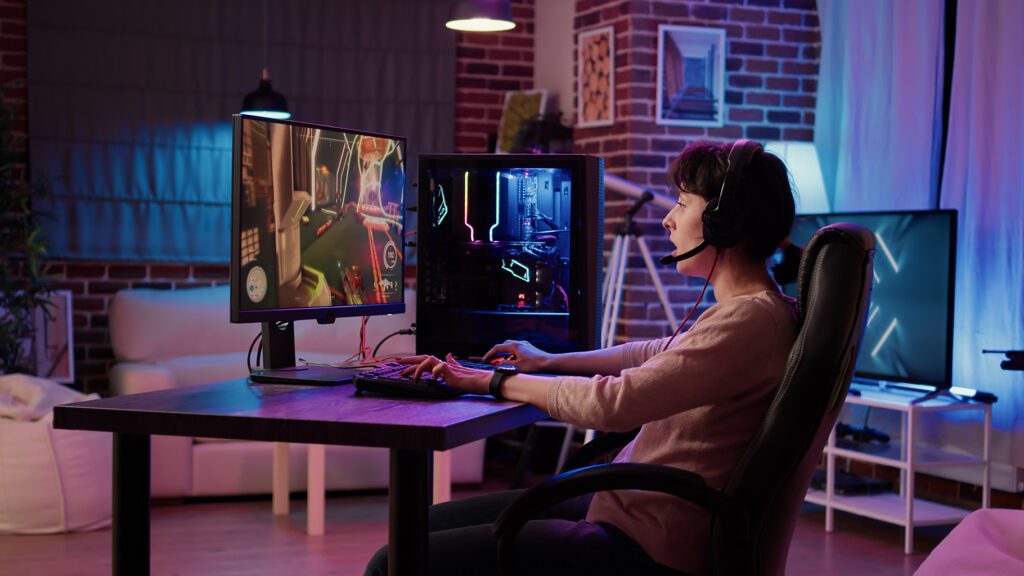When we talk about the gaming industry, its sheer scale can be staggering. The Entertainment Software Association (ESA) tells us there are approximately 190 million gamers in the United States alone – individuals who dedicate at least an hour per week to video games. That’s a substantial slice of the population, no matter how you look at it.
To truly understand the dynamics at play, we need to ask a question: what percentage of female gamers constitutes this massive demographic? It’s a question that gets to the heart of inclusivity, market trends, and the very future of interactive entertainment. So, let’s get right to it!
What’s the percentage of female gamers worldwide?

According to recent studies, around 7 in 10 women within the broader online population identify as gamers. Now, if you compare that to the roughly 8 in 10 men who game, the difference isn’t as vast as you might have initially assumed.
Translating these figures into a broader context, we find that women represent a significant and, frankly, impressive portion of gamers. Indeed, the percentage of female gamers among those who play video games is roughly 45-47%, almost a half-half split.
Now, it’s important to acknowledge that these numbers can shift a bit depending on the specific study, the methodology employed, and the demographics surveyed. However, there’s an undeniable trend: it might not seem so, but women constitute a near-parity demographic within the gaming world.
Engagement and economic impact caused by the number of female gamers

Here’s where it gets interesting: are they just dipping their toes in the digital waters, or are they actively participating in modern gaming’s ecosystem? The answer, it turns out, carries significant weight, particularly from an industry perspective.
Consider this: approximately half of all female gamers also identify as “payers.”
What does that mean, exactly? In this context, payers are those who interact with the various monetization models prevalent in games – microtransactions, in-app purchases, season passes, and the whole spectrum of digital storefront offerings. It directly translates to economic influence, showing female gamers actively contribute to the financial currents that drive the industry.
This statistic underscores their importance as a crucial consumer segment that significantly impacts game revenue streams and development priorities. It’s a point that really can’t be overstated for game developers and publishers aiming to understand their audience!
Diversity as a key factor: what do gamer girls think about it?

Speaking of understanding the audience, let’s mention a word that resonates with a significant portion of female gamers: diversity. A notable 62% of women who game explicitly state that diversity within games is an important factor for them.
Why does this matter so much? For many, it boils down to relatability and representation. Seeing characters that reflect a broader spectrum of identities, backgrounds, and perspectives enriches the gaming experience.
Diverse characters can lead to more compelling narratives, more relatable protagonists, better representations of foreign cultures, and game worlds that feel more inclusive overall.
Could fostering more inclusive game environments really be to the detriment of anyone? The data certainly suggests otherwise.
Female representation and visibility in AAA games

Look at the broader gaming landscape, especially in the realm of big-budget AAA titles, and you’ll notice a welcome shift: there’s been a demonstrably increased focus on representing female and non-binary characters in prominent roles.
And, guess what? This increase in representation seems to correlate positively with the growing number of women engaging with video games. It’s almost as if seeing yourself reflected in the games makes you more likely to, you know, play them.
For reference, back in 2008, a study focusing on teenage gamers revealed a notable gender disparity: out of a group of 20, 13 were male and only 7 were female. Fast forward to today, and that ratio is significantly closer – perhaps something like 11 male and 9 female gamers.
That’s real progress, and it’s reflected in the games we play. Remember some critically acclaimed titles featuring awesome female leads: Saga Anderson in Alan Wake 2 (2023), Ellie in The Last of Us (from 2013 onwards), V in Cyberpunk 2077 (2020) – they are central, driving forces of their narratives.
On the horizon, even a titan like Grand Theft Auto, with its upcoming iteration, will feature a female protagonist in a leading role. This diverse representation broadens their appeal and makes the whole experience more welcoming and engaging for a wider audience – including, crucially, women.
Platform and playstyle preferences among female gamers

Let’s switch gears and examine platform preferences. Are there noticeable differences in how men and women choose to play? Yes! One of the most striking platform divergences lies in mobile gaming.
A significant 44% of female gamers primarily identify as mobile-exclusive players. Compare that to the 27% of male gamers who favor mobile as their sole gaming platform. In other words, women are markedly more inclined to engage with games on their smartphones and tablets.
This platform preference is closely linked to another interesting facet: playstyle identification. Nearly half of all female gamers consider themselves to be “casual gamers,” a term suggesting a gaming style that prioritizes accessibility, flexibility, and perhaps shorter, more easily digestible play sessions.
Mobile gaming, by its very nature, lends itself perfectly to this casual playstyle – games are readily available, sessions can be brief and on-demand, and the barrier to entry is often lower. This preference could be driven by a variety of factors, from time constraints and lifestyle demands to potentially differing motivations for gaming itself.
It hints at a segment of the gaming population that values convenience and readily available entertainment, something the mobile market caters to exceptionally well.
A brief examination of their preferred genres

Yet, even with progress in representation and overall participation, some genre divides persist. Certain genres still see a noticeable underrepresentation of female players. For example, sports games, tactical shooters, racing simulations, and grand strategy titles tend to skew more heavily towards male player bases.
There are exceptions, though. While hardcore racing sims might not be the most female-dominated genre, the Mario Kart series is a racing franchise that demonstrably appeals across genders. Perhaps its accessibility, its focus on fun over rigid simulation, and its strong social multiplayer component make it different.
On the flip side, certain genres consistently resonate strongly with female gamers. Casual puzzle games, exploration-based single-player adventures, match-3 games (like Candy Crush Saga, where an estimated 80% of players are female), and farming or family simulation games are particularly popular.
Think of Animal Crossing, Stardew Valley, and similar titles that emphasize creativity, progression, and a less overtly competitive gameplay loop.
Why these genre preferences? It’s likely a complex interplay of factors. For one, historical marketing practices, thematic appeal, and social dynamics within certain game communities could contribute to these preferences.

Women in the gaming world: conclusion
As explained above, the outdated notion of gaming as a solely male domain is debunked by the numbers. A significant percentage of female gamers, nearly half of the player base, are actively engaged, economically impactful, and prioritize diversity.
Platform trends like mobile and casual gaming are key, and growing representation in AAA titles is vital. The gaming demographic is evolving rapidly, and the industry is adapting – after all, understanding this diverse audience is strategically essential for creating successful games!
For game developers seeking to connect with today’s players, grasping these nuances is paramount. At Main Leaf, we specialize in game development, offering expertise from character design and 3D modeling to coding and advanced tech integration. We also offer granular, outsourcing services in the field if that’s what you’re looking for.
Let us help you reach all your players and build the game envisioned in your wildest dreams! Get in touch to explore how we can bring your vision to life.

